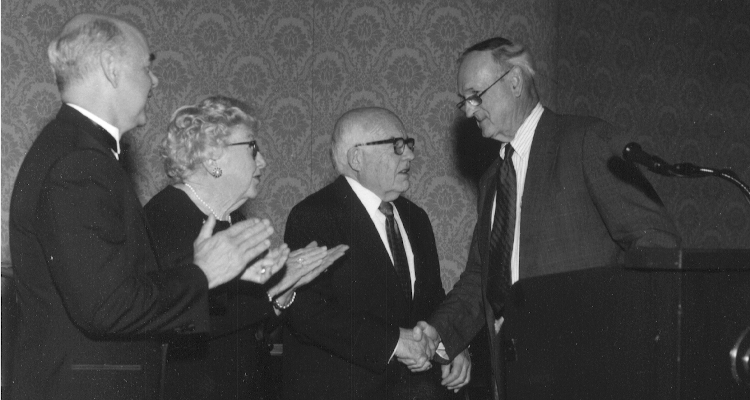- Home
-
About
 Fidelity & Excellence
Fidelity & ExcellenceThomas Aquinas College is unique among American colleges and universities, offering a faithfully Catholic education comprised entirely of the Great Books and classroom discussions.
-
A Liberating Education
 Truth Matters
Truth MattersTruth, and nothing less, sets men free; and because truth is both natural and supernatural, the College’s curriculum aims at both natural and divine wisdom.
-
A Catholic Life
 Under the Light of Faith
Under the Light of FaithThe intellectual tradition and moral teachings of the Catholic Church infuse the whole life of Thomas Aquinas College, illuminating the curriculum and the community alike.
-
Admission & Aid
 Is TAC Right for You?
Is TAC Right for You?Do you enjoy grappling with complex questions? Are you willing to engage in discussions about difficult concepts, with the truth as your ultimate goal?
-
Students & Parents
 Mind, Body & Spirit
Mind, Body & SpiritThere is always something to do at TAC — something worthwhile, something fulfilling, and something geared toward ever-greater spiritual and intellectual growth.
-
Alumni & Careers
 What Can You Do with a Liberal Education?
What Can You Do with a Liberal Education?Nothing speaks more to the versatility of the College’s academic program than the good that our alumni are doing throughout the Church and the world.
- Search
- Giving
Reflections on TAC, New England, from an Early California Graduate
A member of the College’s seventh graduating class, Anne S. Forsyth (’81) has had a lifelong relationship with Thomas Aquinas College, California.
In the following interview, she shares her impressions from her first visit to the New England campus.
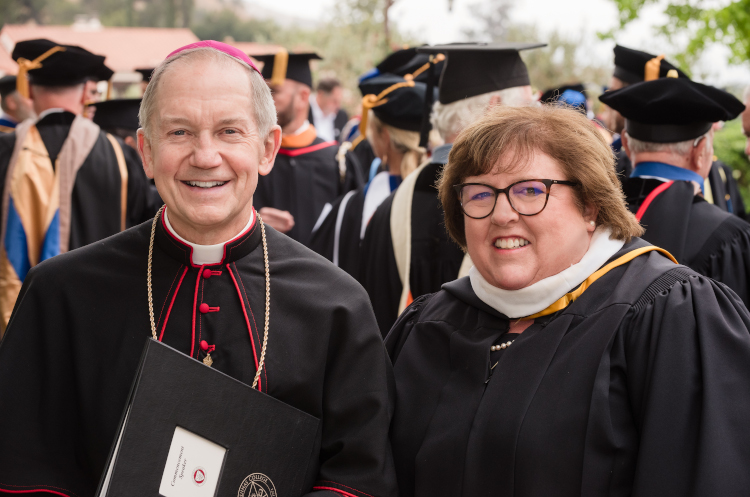
What is your history with the College?
In the late 1960s, my parents, John and Jane Schaeffer, learned from a short article in National Review that Thomas Aquinas College would be opening in the Bay Area, where I grew up. They sought out the founders and became supporters even before the school opened its doors, holding dinners for them at our home. My senior year of high school, after visiting our first campus in Calabasas and sitting in on classes there, I decided to attend. I did my first year in Calabasas and then completed the program on the Santa Paula campus. I graduated in 1981 and a few years later married a Foreign Service Officer and lived abroad. When he passed away in 1999, my former tutor and then-president of the College Dr. Tom Dillon asked me to come back to my alma mater to assist him in his work. I have been here since 2000 and have served as assistant to the president since then and as director of college relations from 2003 until last year, when I was appointed director of special projects.
What brought you to the New England campus and how long were you there?
One of my new “special projects” is the creation of a video to be shown at the College’s 50th anniversary celebrations across the country next year. I spent a few days on our New England campus working with videographer Matt Pirrall and his team from Port Providence Productions, conducting interviews and getting footage for this video.
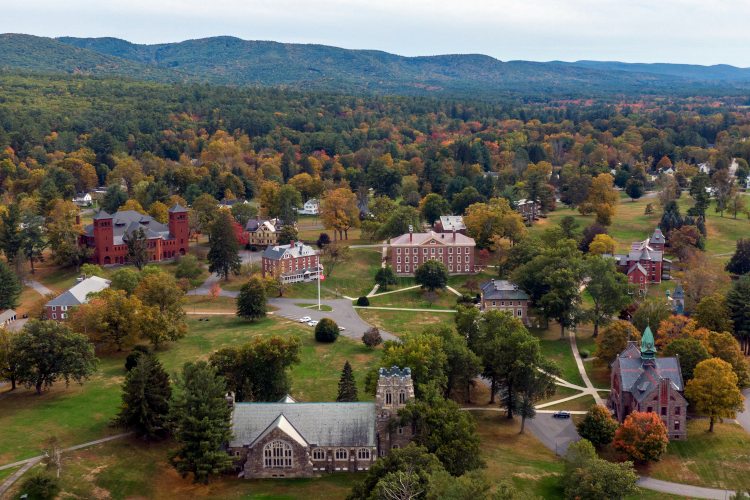
How would you describe the campus?
It is both gracious and truly beautiful. As luck would have it, we had 3-4 inches of snow the first morning I was there — and this was mid-April. By the next day, though, it had melted away, revealing the crocuses and tulips that were already poking through the ground. So I got to see the campus in two seasons, as it were, winter and spring, and it looked beautiful in both.
What were some of the highlights of your visit?
The primary highlight was simply being there. I had not been able to see our second campus for myself until now, so making the trip there was for me a great joy.
Attending Mass in Our Mother of Perpetual Help Chapel was another highlight. The sanctuary renovations had just been completed, and though I had seen photos of the finished work, it was even more beautiful in person. I was particularly struck by the inscription that appears above the sanctuary: a short exchange between God and our patron, St. Thomas Aquinas, which translated from the Latin means: “You have written well of me, Thomas. What would you have as a reward for your labor?” “Nothing except you, Lord.” To find St. Thomas at the heart of the Chapel, itself the heart of the campus, was edifying.
Was it strange seeing so many old friends now all living in a different place?
It was wonderful to see longtime friends from the California campus who had volunteered to launch this new venture in New England. And there’s not a regret among them. In fact, my impression is that the faculty and their families simply love living on the campus and being part of the community life. The same is true of the students, who seem to enjoy having the faculty families living among them, especially the children.
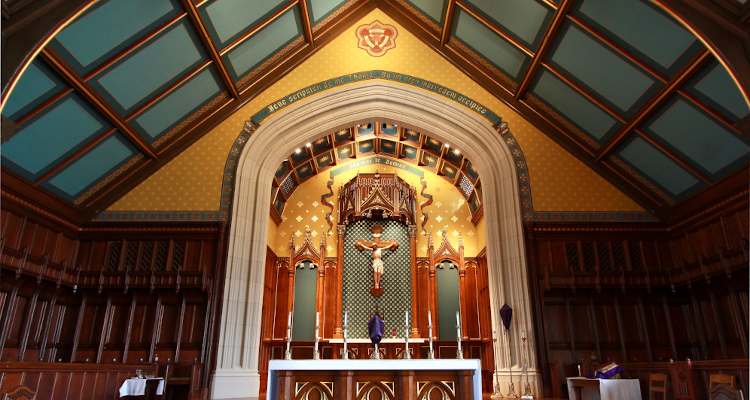
What was your impression of the renovations in Our Mother of Perpetual Help Chapel?
I was struck by the organic way in which Sage Chapel had been transformed into a Catholic house of worship. Where possible, changes were not imposed on the space but developed from what was there. For example, the original pews were altered and reconfigured to create a central aisle; confessionals were added with ornamentation inspired by the existing woodwork in the Chapel, which also influenced the design for the new reredos in the sanctuary. And the color chosen for the sanctuary and ceiling panels is a gorgeous, rich teal, enhanced by gold leaf that catches the light and draws the eye upward. The result is a truly cohesive and beautiful sacred space.
What were the similarities and differences between the two campuses?
The typography and architectural styles of the two campuses could hardly be more different. The California campus with its Spanish Mission Revival-style buildings sits in the foothills of the Topatopa Mountains not far from the beaches of the Pacific Ocean. The New England campus, however, is situated in the scenic but relatively level Connecticut River Valley, and its numerous century-old buildings designed in varied yet harmonious architectural styles, give one the feeling of a Hawthorne novel.
Somewhat to my surprise, as different as the two campuses appear to be, I felt completely at home at Northfield. The reason is that together our pioneering students and tutors — with their families — have successfully established a second TAC, in a very short time, with all of the essentials in place: the academic program, the spiritual life, and the community life.
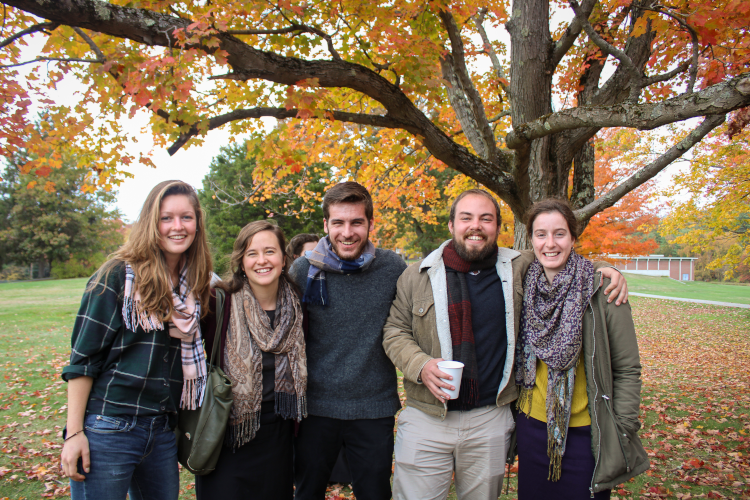
In what ways is the New England campus like the California campus in its early days?
Being at Northfield took me back to my freshmen year at our Calabasas campus: The student body was approximately the same size then (about 100 students), and we had the sense that we were at the start of something great — and it was important to get it right from the beginning. That sense only increased the following year when we moved to the completely undeveloped site of our now-permanent California campus. That first year was a little rough — the wettest winter in 50 years and only dirt paths to get us between the modular buildings that served as our dorms, classrooms, dining hall, and chapel. But we were a happy band of pioneers, focused for the most part on our classes and learning to live a well-ordered Catholic life. I found that same spirit at in New England.
How do you think the different climate shapes the life campus community?
On the California campus, during most of the year, students spend a good deal of time outdoors because the climate is so temperate. In New England, however, with its long and cold winters, indoor space for recreation is important. Thankfully, the students there have a wonderful gym with a newly renovated indoor pool. Tracy Student Center has also been recently renovated and offers a warm and inviting space for recreation.
Outdoor activities differ as well. In California, students like to hike in the mountains surrounding the campus or head to the nearby beaches. In New England, winter sports are a favorite, as is kayaking on the Connecticut River as the weather allows.
It’s not clear to me yet how the colder climate will affect the campus community. Perhaps the students there will study more!
What do you think Dr. McArthur, Mr. Berquist, your parents, and others who are no longer with us would think of this new venture?
I believe that Dr. McArthur and Mr. Berquist would have had some misgivings about the establishment of a second campus, afraid that the College’s unique program of Catholic liberal education would suffer some dilution in the process. I think they would have been concerned, too, about enrollment, as they had been at the beginning of the College: Would the students come? However, I think they would be delighted to see this new campus flourishing in all the best ways. We even have a waiting list for next year’s freshman class!
As for my parents, who first supported the College when it was but a dream, I think they would be so pleased at its success. At a dinner celebrating the 30th anniversary of the College’s 1970 kick-off dinner at which Venerable Fulton Sheen gave the keynote address, my father was honored for his many years of service on the Board of Governors. He was given a framed photograph of the California campus. The campus had not yet been fully built out, but nevertheless this photo simply delighted him. He hung it in the dining room of our home where he and my mother had hosted so many dinner parties for the founders and other early supporters. On seeing it, he would simply smile, amazed that the dream had become a reality. I hope he and my mother are getting a glimpse of Northfield now.
